Scientists Amazed by This Gigantic Upside-Down Lightning Bolt That Hit "The Edge of Space"
New study captured stunning photos.

If you would guess that clouds firing lightning bolts up toward space instead of down to what we refer to as the ground isn't exactly cosmic business as usual, join scientists. They are baffled by the appearance of a gigantic upside-down lightning bolt which arched 50 miles upward—far enough to touch the "edge of space." Read on to find out what happened, what a new study says is responsible, and what this all might signify.
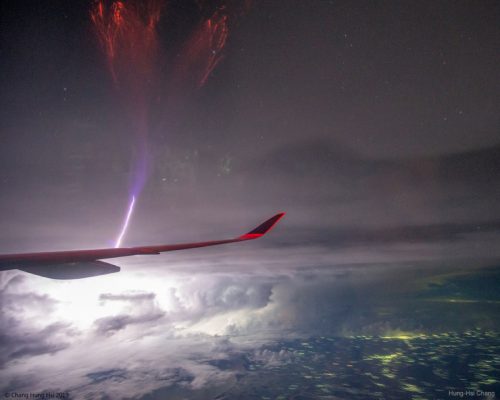
It's one of the earliest scientific principles many of us observe: When lightning appears out of clouds, it runs to the ground. But that's not what happened on May 14, 2018. As an ordinary thunderstorm did its thing over Oklahoma, a cloud shot one lightning bolt upward—50 miles into space. That's far enough to touch the ionosphere, or what scientists consider the "edge of space." It was the rare and little-understood atmospheric event known as a gigantic jet.
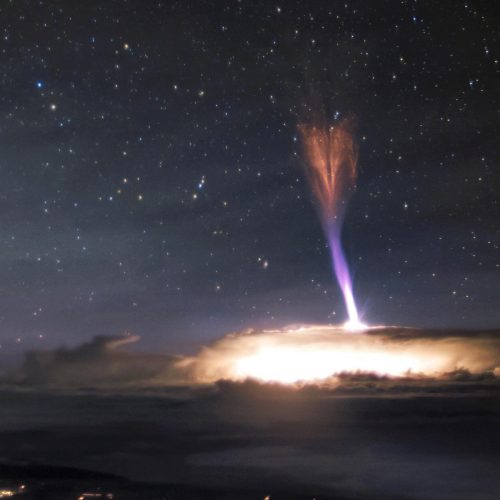
"Gigantic jets are simply luminous beams born alongside regular lightning bolts, yet pointed in the opposite direction," reports CNET. "But they're a lot stronger than their downward-facing counterparts, sometimes even threatening space vehicles or other technologies floating in our planet's orbit." And the gigantic jet that appeared in 2018 was a doozy. Believed to be the most powerful gigantic jet observed so far, it carried 100 times more electrical power than the typical lightning bolt.
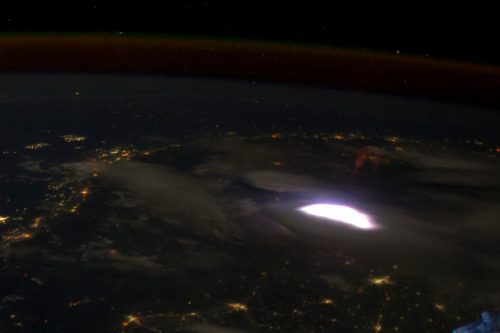
Because they arc straight up, away from the earth, gigantic jets are by definition difficult for scientists to observe. Several have been sighted over the last few decades, but most have come from chance sightings by the public. One gigantic jet was captured by photo from an airplane; another was snapped by mountaineers in China. But gigantic jets haven't been the focus of many space or atmospheric researchers. But a new study might stir up more interest in the phenomena.
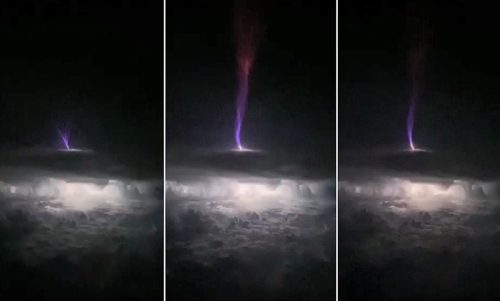
The 2018 gigantic jet was the focus of a study published this month in the journal Science Advances. It was photographed in 3D by a nearby lightning mapping system, a rare occurrence. The striking photos show a bolt of light in varying shades of purple reaching out from the earth's surface into the depths of space.
"We were able to map this gigantic jet in three dimensions with really high-quality data," said Levi Boggs, a research scientist at the Georgia Tech Research Institute and one of the paper's authors.
What they found was that the electrical forces that propel lightning to the ground—known as leaders and streamers—were found above the cloud in the 2018 gigantic jet, not below, as usual.
RELATED: Earth is Spinning Faster than Usual and Here's How it's Already Affected You
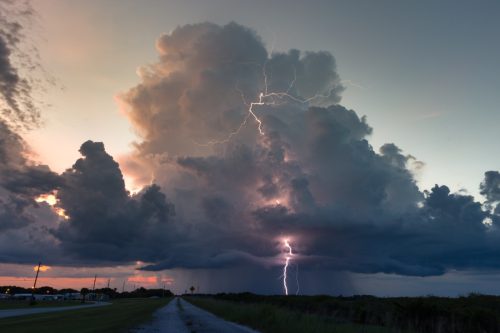
Researchers theorize that the reason gigantic jets shoot upward is that something may block the flow of electrical charge downward. That 2018 Oklahoma storm produced very little traditional lightning before firing off the record-setting gigantic jet. "For whatever reason, there is usually a suppression of cloud-to-ground discharges," Boggs said. "There is a buildup of negative charge, and then we think that the conditions in the storm top weaken the uppermost charge layer, which is usually positive. In the absence of the lightning discharges we normally see, the gigantic jet may relieve the buildup of excess negative charge in the cloud." Additional research on gigantic jets could help scientists better understand how thunderstorms behave, including the detection of potential lightning strikes.














